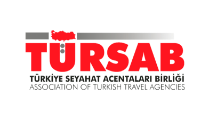BBL Swelling: Timeline & tips to reduce it!
Have you undergone a BBL surgery and currently experience swelling? If yes, you are not alone. BBL swelling is inevitable after the operation, everybody experiences it without an exception. Swelling is the body’s natural reaction after the surgery and it may be discomforting. However, sometimes it is necessary to endure difficulties in order to reach your goals.
In this article, we will start by explaining how it happens, and continue with the BBL swelling timeline, give the answer to the question “When does swelling go down after BBL”, and lastly, we will give tips to reduce swelling after BBL to make you overcome the recovery period in the easiest way.
Table of Contents
Swelling after BBL: What is it?
Swelling is an unavoidable, expected outcome of the Brazilian Butt Lift surgery, and we are here to give you a tutorial. In the sections below, we explained every fine detail of BBL swelling for you. So, let’s start with the question every BBL patient wonders about swelling in the first place, is it normal or not?
Is swelling normal after BBL?
Swelling is completely normal after a BBL surgery. During BBL, the plastic surgeon harvests fat and transfers it to the butt by using a cannula. The motion of the cannula damages the surrounding area, even if the surgery was a complete success. That is why it is inevitable and every single patient experience it after the BBL operation.
Why does it happen after surgery?
As we just mentioned, while the surgeon performs the surgery, the cannula damages the surrounding tissue. When there is damage, the immune system takes action and starts to heal that area by sending inflammatory cells. The accumulation of inflammatory cells in the damaged tissue causes BBL swelling.
Plus, lymphatic vessels in the tissue also get damaged by the cannula. Lymphatic vessels carry lymphatic fluid and if these vessels get damaged, the fluid inside begins to spread around instead of following the circulation since the vessels are no longer steady. As a result, lymph fluid creates another fluid accumulation in the area. When these two factors become together, swelling after BBL happens.
Will it affect your final results?
Swelling won’t affect the final results, it will only have an effect on the butt during the recovery process. You will experience swelling as long as your body heals the damaged area. When the body is healed completely, inflammatory cells will no longer go to the tissue and the lymphatic vessels will be repaired. For that reason, it will not have an effect on the final result.
Swelling timeline after BBL
Luckily, BBL swelling is not permanent. As time passes, your body will heal and the swelling will decrease gradually. Over time you will start to feel less swollen, and it will be gone after a while. We prepared a BBL swelling timeline below to help you understand the swelling process better. Let’s explore how swelling will be gone over time. Don’t forget that the recovery time can change from patient to patient since everyone’s body is different.
First week
The first couple of days following the surgery is the time when you will experience the most swelling and your butt can look huge. In addition to the lymphatic fluid and the inflammation, there will be also extra tumescent fluid in the areas where the fat is removed. In 1-2 days, the excess fluid will leak through the incisions and it will be gone.
First month
The swelling will be gone to a certain point, compared to the first week following the surgery. Lymphatic fluid and inflammation are still there, but they won’t give you as much discomfort as before, and the butt will start to look better.
Two to three months
By this time, you will have completed most of the healing process and the swelling will be significantly reduced. Even though your butt will be settled mostly, it will be still swollen to a certain point. You will feel way more comfortable in your daily life, but you will have to wait a bit more to see the final shape of the BBL butt.
Six months
This period is the time to answer one of the most asked questions, “How long does swelling last after BBL?” After six months, the healing will be completed and the swelling will be almost gone. Now you will no longer have swelling issues and you will be able to see the final results, your dream hourglass body.
Tips to reduce your swelling after BBL
Certain actions can either reduce or increase BBL swelling. That’s why it is important to know what to do or not to deal with your swelling after BBL. By understanding what will be beneficial for your body during the healing period, you can deal with BBL swelling easier. So, let’s proceed with learning how to reduce swelling after BBL.
What to do?
There are certain things that can help with lymphatic fluid and inflammation, and these can reduce swelling after BBL. Basically, following the post-op instructions and supporting your body with several steps and actions can help to reduce swelling in the healing process. So, what helps with swelling after BBL?
Sleep well
In a study, it was seen that not getting enough and regular sleep may lead to inflammation, especially in women. Plus, it was seen that insomnia treatments may reduce inflammation by giving proper sleep to the patient. It is because while you are sleeping, the body regulates the whole system to manage inflammation. (1)
These findings show the importance of sleep in terms of inflammation. For this reason, sleep is important during the recovery period. Try to have a consistent sleep pattern, and get enough sleep every day. We know that sleeping after a BBL can be a little tricky, so we prepared a full guide with tips & tricks that will help you sleep after a BBL comfortably.
Wear your garments
Post-op BBL garments put compression to the necessary areas and the compression helps to reduce swelling. It is essential to wear compression garments 24/7 for about 3 months to get the most benefit and minimize the BBL swelling.
Get lymphatic massages
Lymphatic drainage massage is a kind of massage that focused on the lymphatic system. The compression that massage provides helps to move the lymphatic fluid build-ups and enhances the lymphatic flow. Getting massages or at least doing your own massage regularly is essential if you want to reduce swelling after BBL.
Anti-inflammatory diet
Certain foods can reduce inflammation by regulating inflammatory properties. Going on an anti-inflammatory diet, or more simply choosing these foods over others can help to minimize swelling. An anti-inflammatory diet includes fish, plant-based foods, and healthy fats. Especially omega-3, antioxidants, and fiber-rich foods can help to reduce inflammation (2) (3). For example, you can take omega-3 from salmon, antioxidants from berries, and fiber from legumes. One last thing, don’t forget to drink plenty of water.
Supplements
You may consider taking some supplements which can fight inflammation. Supplements such as Omega-3, curcumin, and magnesium can reduce inflammation (4) (5) (6). However, if you are thinking about taking a supplement, consult your plastic surgeon first. If the surgeon agrees with you, then you should take it.
For more information on diet & supplements you should use during recovery, you can hop onto our article on BBL recovery.
What to avoid?
You can reduce swelling by minimizing inflammation because they are cause and effect of each other. So, what can you do to reduce it? Let’s see the things you should avoid to reduce inflammation after BBL surgery.
Foods that promote inflammation
Focusing on an anti-inflammatory diet also means avoiding the ones that can increase inflammation. By reducing the salt, sugar, red meat, and processed food intake, you simply avoid foods that cause inflammation, which prevents the increase of swelling (7).
Smoking
Studies show that smoking promotes inflammation (8). Cigarettes cause the immune system to get weak and inflammatory cells to release. These factors cause inflammation, resulting in swelling, which means you should avoid smoking if you don’t want the swelling go worse.
Alcohol
Another thing that causes inflammation is alcohol consumption. Too much alcohol intake can damage the immune system and lead to inflammation (9). It is best to avoid alcohol during the recovery period to minimize the swelling after Brazilian Butt Lift.
Heavy activity
In a study, it is shown that heavy exercise can trigger inflammation (10). Excessive workouts can promote an inflammatory response, and this can increase swelling after BBL. If you are a person who has a heavy workout program, wait until your BBL butt heals completely.
Direct sun
Prolonged sun exposure can lead to tissue inflammation (11). UV radiation that comes from the sun can alter the immune system and cause inflammation, which means the sun can cause swelling. You should stay away from beaches and sunbathing until you fully recover.
Signs of worsening swelling: What to do?
Let’s say you have taken into consideration the factors that may increase swelling and changed your habits according to them, but the swelling looks like it is going even worse. What should you do in such a situation? Even though it is rare, swelling can get worse over time.
If the swelling:
- Doesn’t decrease over time
- Causes intense pain
- Comes along with a fever
You should give your doctor a visit and learn if there’s something going on with your body. The doctor will decide what can be done for treatment, according to your showing symptoms or lab results.
- (1) Irwin, Michael R et al. “Cognitive behavioral therapy and tai chi reverse cellular and genomic markers of inflammation in late-life insomnia: a randomized controlled trial.” Biological psychiatry vol. 78,10 (2015): 721-9. doi:10.1016/j.biopsych.2015.01.010
- (2) Kiecolt-Glaser, Janice K. “Stress, food, and inflammation: psychoneuroimmunology and nutrition at the cutting edge.” Psychosomatic medicine vol. 72,4 (2010): 365-9. doi:10.1097/PSY.0b013e3181dbf489
- (3) Swann, Olivia G et al. “Dietary fiber and its associations with depression and inflammation.” Nutrition reviews vol. 78,5 (2020): 394-411. doi:10.1093/nutrit/nuz072
- (4) Ellulu, Mohammed S et al. “Effect of long chain omega-3 polyunsaturated fatty acids on inflammation and metabolic markers in hypertensive and/or diabetic obese adults: a randomized controlled trial.” Food & nutrition research vol. 60 29268. 29 Jan. 2016, doi:10.3402/fnr.v60.29268
- (5) Peng, Ying et al. “Anti-Inflammatory Effects of Curcumin in the Inflammatory Diseases: Status, Limitations and Countermeasures.” Drug design, development and therapy vol. 15 4503-4525. 2 Nov. 2021, doi:10.2147/DDDT.S327378
- (6) Nielsen, Forrest H. “Magnesium deficiency and increased inflammation: current perspectives.” Journal of inflammation research vol. 11 25-34. 18 Jan. 2018, doi:10.2147/JIR.S136742
- (7) Hess, Julie M et al. “Exploring the Links between Diet and Inflammation: Dairy Foods as Case Studies.” Advances in nutrition (Bethesda, Md.) vol. 12,Suppl 1 (2021): 1S-13S. doi:10.1093/advances/nmab108
- (8) Yan, Su et al. “Effects of Smoking on Inflammatory Markers in a Healthy Population as Analyzed via the Gut Microbiota.” Frontiers in cellular and infection microbiology vol. 11 633242. 23 Jul. 2021, doi:10.3389/fcimb.2021.633242
- (9) Wang, H Joe et al. “Alcohol, inflammation, and gut-liver-brain interactions in tissue damage and disease development.” World journal of gastroenterology vol. 16,11 (2010): 1304-13. doi:10.3748/wjg.v16.i11.1304
- (10) Cerqueira, Érica et al. “Inflammatory Effects of High and Moderate Intensity Exercise-A Systematic Review.” Frontiers in physiology vol. 10 1550. 9 Jan. 2020, doi:10.3389/fphys.2019.01550
- (11) Fleury, Naomi et al. “Sun Exposure and Its Effects on Human Health: Mechanisms through Which Sun Exposure Could Reduce the Risk of Developing Obesity and Cardiometabolic Dysfunction.” International journal of environmental research and public health vol. 13,10 999. 11 Oct. 2016, doi:10.3390/ijerph13100999






